The OHL had a disappointing 2019 NHL Draft class, with only four OHL draft-eligible players selected in the first round, making it one of the worst in recent years. The highest player selected was 18th overall, when the Dallas Stars selected Thomas Harley.
This year’s OHL class will make up for the lackluster 2019 draft, with all 10 players listed below considered potential first-rounders, along with a prospect who can challenge for the number one spot. The 2020 NHL Draft is stacked and the OHL prospects are a big reason why.
1. Quinton Byfield—C
At 6-foot-4, 214 pounds, Quinton Byfield has the tools to be an elite power forward who can take over a game every time he steps on the ice. He’s also one of the younger players in the draft with an August birthday. He separates himself from his peers with not only his size but his tantalizing blend of speed, skill, and scoring. Named the OHL’s Rookie of the Year in 2018-19, Byfield led his offensively deprived Sudbury Wolves team in scoring with 61 points in 64 games. At the 2019 Hlinka Gretzky tournament, he added five points in five contests, and showcased his line-driving ability.
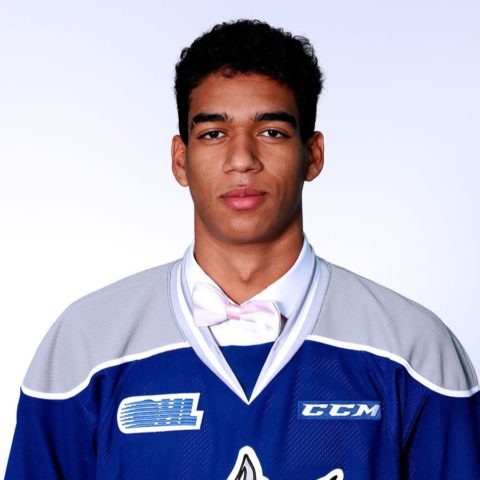
Concerns that Byfield dominates solely because of his size should be easily dismissed. He uses his frame (exceptionally) to shield the puck, but he does not rely on it, which makes him stick out from the other forwards that lit up the junior leagues. He started this season with nine points in four games, and while he won’t keep the pace, 100 points are not out of the question depending on how the talent around him performs.
I’d like to see him more engaged at times as he tends to disappear in some games. He has the talent to dominate every shift and, in his draft year so far, he has. Maintaining consistency will be key. Expect Byfield to challenge Alexis Lafreniere as the top prospect of the 2020 draft class.
2. Cole Perfetti—LW/C
Cole had quite the coming-out party at the 2019 Hlinka Gretzky tournament where he put up 12 points (team-leading) in five games, and displayed his elite goal-scoring ability with eight. While he’s been regarded for quite some time as a potential top-10 selection, the tournament vaulted him into many top-five lists, as well as my own. We had “Goal” Caufield last year, and now “Goal” Perfetti for the 2020 draft. He also led the Saginaw Spirit in points, with 37 goals and 74 points in 63 contests.
His main flaw is his skating, with his poor technique. At 5-foot-10, he needs to seriously improve his acceleration, which affects his ability to keep up with the play at times. However, he makes up for his skating with elite awareness, knowing exactly where to be in the offensive zone for prime opportunities. His awareness is what makes him one of the smartest players in the draft class, as he’s always reading the play correctly.
If he can round out his defensive play and skating, he may be able to remain a center at the NHL level. If not, he’s still a play-driving winger who’s a threat to score whenever and wherever he is in the opposing zone. What sticks out is his ability to score in any way. Not only does he rely on his shot, but he battles around the net to get open.
3. Marco Rossi—C
Rossi is easily the best Austrian prospect since Thomas Vanek, finishing fourth on the Ottawa 67’s in points with 65 in 53 games and having an outstanding playoffs with 22 points in 17 games. Last season was his first overseas. He played in Swiss juniors before that, and recorded seven points in 18 Swiss League games. At 5-foot-9, he is a cerebral play-maker. Due to his early September birthday and his height, scouts may be reluctant to select him in the top ten, even though he is worth it.
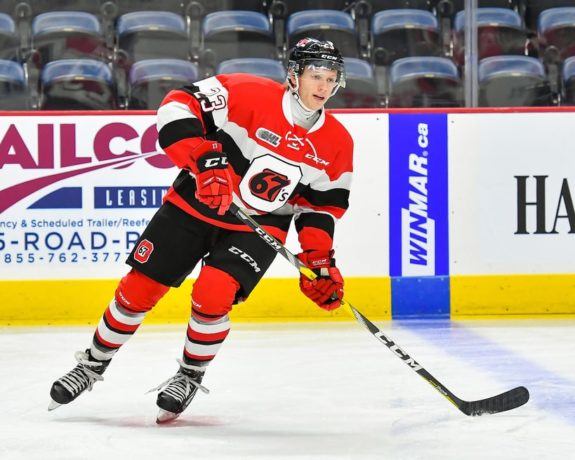
Rossi excels at every aspect of the game and is surprisingly strong on his skates. He also possesses high hockey IQ, and consistently buzzed around the net to scan the play. His most notable trait is stick-handling. He’s flashy, but not overly flashy and knows when to pick his spots. He also shows creativity and precision passing on a nightly basis. He has an all-around game, with his relentless forecheck and backcheck. He is great at stripping the opposition of the puck, even in the offensive zone.
If he can work on his shot more, I can see him becoming an elite player. His goal scoring capabilities are evident, as he recorded 29 goals last season, but he has another level to hit if he can add power and velocity to his shot.
4. Jamie Drysdale—RD
Jamie Drysdale is the most complete defenseman in the draft. Suiting up with the Erie Otters, he posted a solid 40 points (fourth on team) in 63 games. At the 2019 Hlinka Gretzky tournament, he had five assists in as many games. The 5-foot-11 blueliner plays a mobile game and frequently joins the rush, while also being responsible in his own zone.
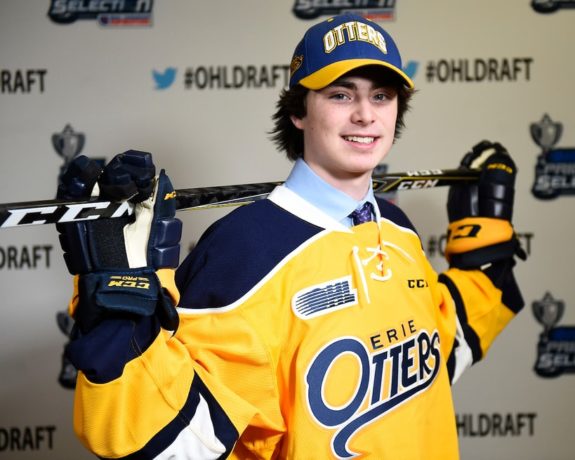
The first thing you’ll notice about Drysdale is his elite four-way skating ability. Whether it’s his acceleration or his edge-work, he is a slippery defenseman though he can play too conservative at times. He has fantastic breakout passes, but I’d like to see him carry the puck more and be a bit more selfish at times. He can also quarterback a power play but he needs to shoot more often. Defensively, his skating allows him to recover easily and makes him tough to beat one-on-one. He can be outmatched physically, though it’s an easy fix.
I’m not sure if he is a bonafide number one defenseman just yet. I’d like to see a greater shift-by-shift impact from him and the ability to control play. As of now, I have him projected as a high-end number two.
5. Antonio Stranges—LW
Antonio Stranges is one of the most fun players to watch of the 2020 NHL draft prospects. Another incredible skater, he is easily the best in the draft class, though his top-end speed could use work. Stranges gains momentum with his 10-2 skating, and it’s rare to see him skate in a straight line due to how efficient his style is at gaining acceleration.
The American-born winger surprised some a few years back by joining the London Knights where he recorded 34 points in 66 games, though he did receive quality minutes until late in the season. With increased opportunity, he has seven points in four games this season.
I think the NCAA route would’ve been beneficial for Stranges, as he plays too much of a “junior-style” game already. It works for him, but I’d like to see him add a bit more consistency. He can try to do too much sometimes as well. His shot is okay, but he really excels and generates power on the backhand, and is able to place the puck accurately with a quick flick. His passing, especially his saucer, is also accurate from the forehand and backhand.
His strong skating and hands already make it difficult for defenders to separate him from the puck but when he bulks up, it will be even harder. Would like to see more effort at times, especially on the backcheck. No doubt he is an elite talent, he just needs to round out his game.
6. Jaromir Pytlik—C/RW
The Czech native joined the Sault Ste. Marie Greyhounds later in the season but made an impact in the 26 games he played scoring 19 points. At 6-foot-3, he is a valuable center to look out for, playing an adaptable and all-around game, though he doesn’t stand out in any one area.
Jaromir Pytlik is a goal-scoring center who creates his offense around the net and is a good bumper on the power play. He’s a shoot-first center but can also make nice plays, though I’d like to see more creativity out of him. His shot is okay, but his instincts around the net are what stand out about his goal-scoring ability. For a bigger guy, his skating is pretty good and when he gets going he can blow by defenders.
I’d like to see him be a bit more selfish and carry the puck at times, with his speed and puck protection he has the ability to dominate the occasional shift. He has good hands as well but his overall vision and play-making are lacking at times. With Barrett Hayton and Morgan Frost departing, Pytlik has a chance to shine as the Greyhounds’ number one center.
7. Jean-Luc Foudy—C/RW
Like his brother Liam, Jean-Luc Foudy is an incredible skater, probably the best in his draft class. Jean-Luc is the better prospect of the two; he may not be as good a goal-scorer, but his strong play-making and hands make up for it. He recorded 49 points in 63 games, which landed him third on his team with only eight goals.
The Columbus Blue Jackets surprised everyone by selecting Liam 18th overall, which was partly due to the ridiculous athleticism he displayed at the NHL draft combine. The Foudy brothers inherited their parents’ genes, which make their tools enticing to scouts. I don’t think Liam was deserving of a first-round selection, but Jean-Luc surely is due to his higher offensive ceiling. I can see him following suit and going higher in the draft than expected.
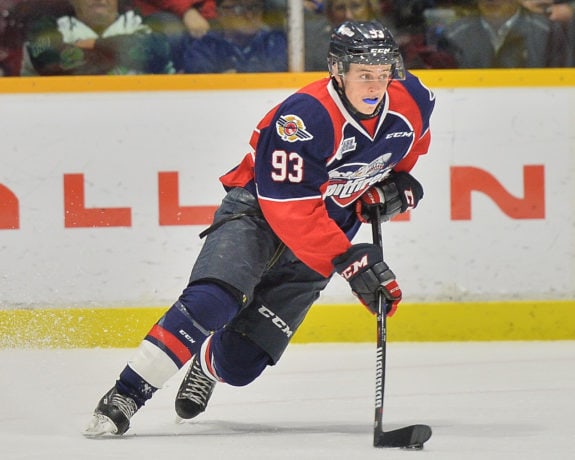
He is a great passer and he shows flashes of creativity. However, I’d like to see more line-driving ability, and for him to facilitate the offense in the offensive zone. He’s good on the breakout because of his skating, but isn’t great at sustaining offensive pressure. I’m not sure he’ll be able to stick at center for that reason. He also needs to improve his goal-scoring; his shot isn’t awful, but he doesn’t utilize it. He is a pass-first player who plays a perimeter game but with his quick hands and feed I’d like to see what would happen if he was selfish and took the puck to the net more often.
8. Will Cuylle—LW
Teammate and Jean-Luc Foudy’s occasional linemate, Will Cuylle added 26 goals and 41 points in 63 games with the Windsor Spitfires. He was a great compliment to Foudy, playing like a power forward at 6-foot-2 with great goal-scoring ability. At the Hlinka tournament, he added three points in five matchups playing for Canada. In four playoff games, he had three points while Foudy had one.
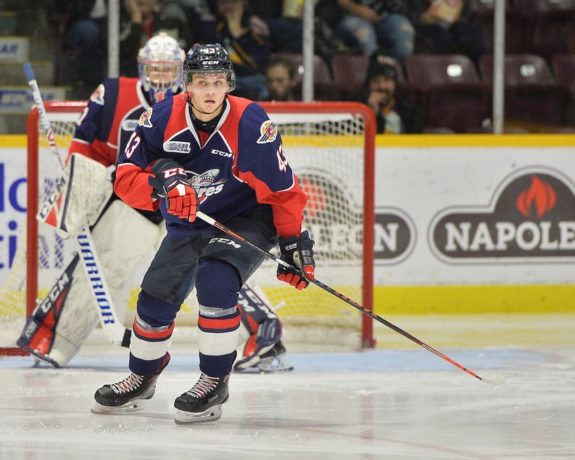
His main ability is scoring goals. He possesses a heavy shot with good accuracy from far out and is able to find the soft spots in the defense to be set up. He can also battle in front of the net cleaning up rebounds. His play-making isn’t a strength but it was noticeably better as the season wore on, along with a more refined two-way game, which was evident with his backchecking. He needs to add creativity or be more dynamic for me to consider him a potential top-line winger, but he has tools that should translate well.
9. Jacob Perreault—RW/C
Son of Yanic Perreault, Jacob Perreault had 30 goals and 55 points in 63 games last season playing for the Sarnia Sting, where he finished second in goals and fourth in points. Perreault is average height (5-foot-11) with average skating, but his offensive instincts make up for it.
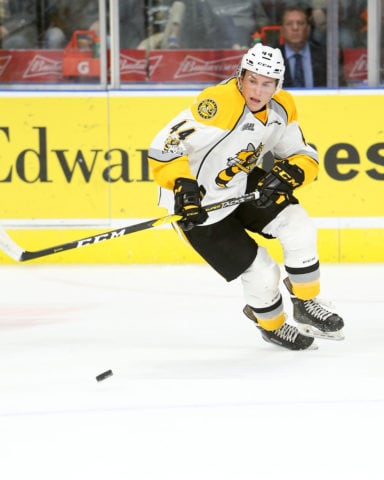
Perreault possesses good hockey IQ and, while he isn’t the best skater, he knows where to be on the ice to score. He’s spent time at all three forward positions and will likely continue to be a left winger, though playing in the middle is possible. Being a goal-scoring center would boost his draft stock more than some would like to admit, but to stay there, he needs to work on his urgency and skating. While he gains decent speed, he lacks acceleration and technique.
Due to his hockey IQ, he has a good understanding of the defensive side of the game though, again, I would like to see more effort at times. His best asset is his shot, mainly his deadly one-timer, but his release is quick and he has pinpoint accuracy.
10. Hayden Fowler—C/LW
Hayden Fowler has struggled with injuries, but when he’s healthy he produces. The 5-foot-10 center recorded 18 points in 25 games with the Erie Otters last season and in his draft-2 season, he put up 22 points in 28 games. He will be wearing an “A” this season. Fowler’s offensive tools are fantastic, and if he can avoid injury, he could leap up the charts.
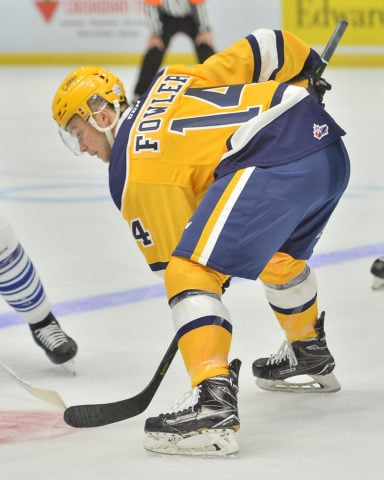
Fowler is an elite skater, not just dynamically but fundamentally. He has excellent edge-work and can blow by defenders with ease. He is offensively-oriented; while I’d like to see him commit more to defense, his upside is pretty high. He also isn’t great defensively, but he can play a pesky game and it would be a boost to his skillset if he showed that side of his game more. He is a shoot-first center, with a lightning-quick release and an accurate shot.
His IQ and play-making ability are also decent. He has a solid understanding of where to be in the offensive zone and he uses his skating to open up lanes. Expect a big year out of him, but I’m not sure he can stick at center going forward.

All the players listed here are in my top 40. While 10 players being selected in the first round from the same league may seem far fetched, these OHL players are talented enough to do so—and there are a handful who can contend for a top-10 spot.
For comparison, I ranked my top 10 of 2019’s OHL draftees and the 2020 draft-eligibles.
- Quinton Byfield
- Cole Perfetti
- Marco Rossi
- Jamie Drysdale
- Antonio Stranges
- Philipp Tomasino (11th)
- Jaromir Pytlik
- Thomas Harley (17th)
- Jean-Luc Foudy
- Arthur Kaliyev (19th)
- Will Cuylle
- Vladislav Kolyachonok (27th)
- Jacob Perreault
- Jamieson Rees (33rd)
- Hayden Fowler
- Ryan Suzuki (36th)
- Connor McMichael (42nd)
- Nicholas Robertson (44th)
- Ethan Keppen (58th)
- Matvey Guskov (70th)